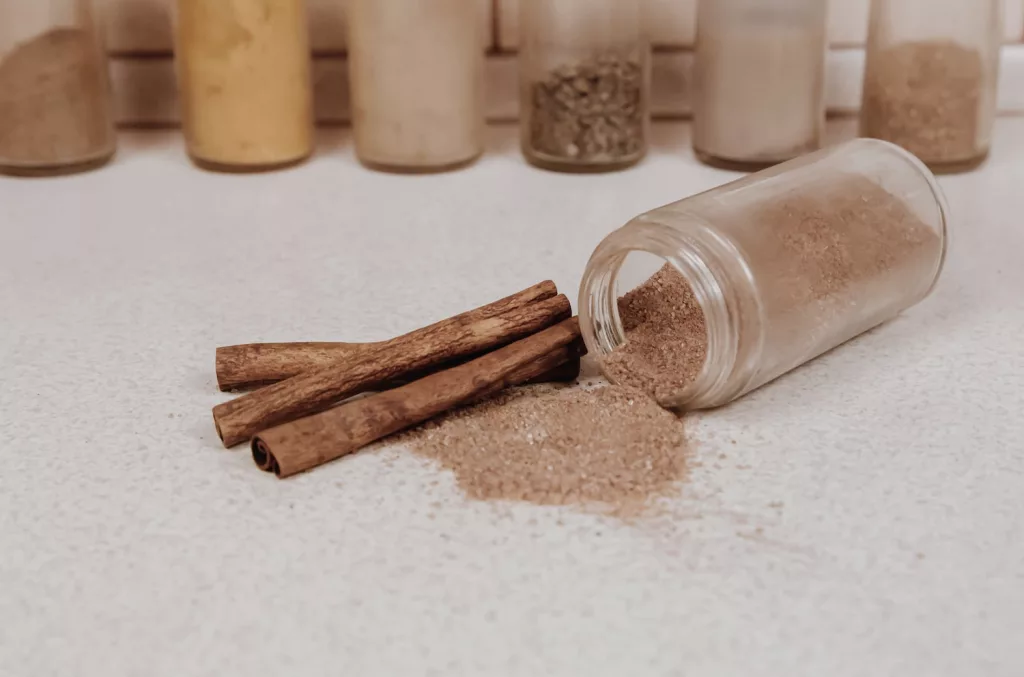A spicy, sugary dessert is the perfect holiday treat. But where exactly are the health benefits of cinnamon and where does that flavor come from? From the bark of the tree comes the aromatic spice and traditional remedy known as cinnamon.

Cinnamon is a spice harvested from the Cinnamomum tree family. Originally from the South and Central American Caribbean and Southeast Asia. Since ancient times, it has been used as an ingredient in a variety of foods, beginning as far back as Egypt.
It was once so rare and expensive that it could only be given to a king. Today, it is widely available and inexpensive in most grocery stores. It’s also used as an ingredient in a wide variety of dishes. There are two main varieties of cinnamon, the cassia and the ceylon. They are not nutritionally equivalent.
The bark and stems of the cinnamon tree are harvested to make the spice. First, the inner bark is peeled off and the wood is stripped. Next, the cinnamon is dried so it can be rolled into a sticks.
You can make cinnamon powder by grinding these sticks. The oily part of cinnamon, rich in the compound cinnamaldehyde, is responsible for its characteristic aroma and flavor. How will this spice benefit your health? Keep reading to know more about the health benefits of cinnamon.
Health Benefits of Cinnamon and How They Work
1. High in antioxidant properties
Polyphenols, a type of antioxidant, are found in abundance in cinnamon. Choline, beta-carotene, alpha-carotene, beta-cryptoxanthin, lycopene, lutein, and zeaxanthin are some of the antioxidants present, along with traces of vitamins B and K.
Antioxidants have been shown to be effective against oxidative stress, which can contribute to the development of cancer, type 2 diabetes, and other diseases. Cinnamon’s antioxidant properties are so strong that it is sometimes used as a natural food preservative.
2. Fight off bacteria
Salmonella, E. coli, and staph are just a few of the disease-causing bacteria that it is effective against. In 2015, scientists discovered how to encapsulate the antimicrobial compounds found in peppermint and cinnamon, allowing them to effectively eliminate bacterial biofilms and stimulate the healing process.
3. Eliminate fungal infections
Some types of fungal infections can respond to treatment with cinnamon oil. In 2016, researchers discovered that cinnamon oil effectively fought a strain of Candida that causes bloodstream infections in the lab. This may be due to its ability to kill microorganisms. It is possible that its oil may be useful in the treatment of this infection if these results are confirmed in future studies.
4. It has anti-inflammatory qualities.
One of the antioxidant compounds in it , cinnamaldehyde, which is responsible for the spice’s distinctive aroma and flavor, is thought to have anti-inflammatory properties.
Inflammation plays a critical role in the body’s defense against infection and repair of damaged tissue. However, chronic inflammation that attacks the body’s own tissues is problematic.
More research is needed to support the use of cinnamon as a natural remedy for older adults to help with inflammatory diseases, such as rheumatoid arthritis, that become more common with age.
5. May provide some protection against heart disease.
People who eat cinnamon may be less likely to develop heart disease, which is the leading cause of death worldwide. It has been shown to lower blood pressure, cholesterol, and triglyceride levels, all of which are major risk factors for developing heart disease. All of these things working together could help keep heart disease at bay.
6. Affects Blood Sugar Levels
One of the many known benefits of cinnamon is its ability to lower blood sugar levels. In addition to its positive effects on insulin resistance, it can lower blood sugar through a number of other mechanisms.
First, it has been shown to reduce the absorption of glucose after a meal. It does this by inhibiting a variety of digestive enzymes, which in turn reduces the rate at which carbohydrates are absorbed and metabolized.
Second, a compound found in it may have the ability to mimic the effects of insulin, which would result in an increase in the amount of sugar taken up by cells.
7. Protect your mental health
The progressive breakdown of nerve cell structure or function is a hallmark of neurodegenerative diseases. Parkinson’s disease and Alzheimer’s disease are two of the most common forms. The accumulation of a protein called tau in the brain is a hallmark of Alzheimer’s disease, but certain compounds in it appear to inhibit this process.
It improved the performance of rats in a memory test that involved navigating a water maze. The study was done on rats. Of course, human studies are needed to determine the generalizability of these results.
All cinnamon is not the same. Despite its accessibility and lower cost, Cassia cinnamon contains high levels of coumarin, a compound that can be toxic if consumed in large quantities.
On the other hand, the Ceylon variety is the less risky option. However, this type of cinnamon is much rarer. In fact, you should only buy it from a specialty spice shop, and it smells much better.
Because of its versatility, it can be used in both sweet and savory preparations. For example, if you want to add more flavor to warm apple cider, you can add a cinnamon stick as a garnish.
Add some spice to your salty snacks by sprinkling ground cinnamon on top. And sugar and cinnamon are a match made in heaven, so sprinkle some on your morning toast or sweet treat.
Disclaimer: This is for informational purposes only.
Did you find this helpful? Let us know in the comments.
Source: Healthline
You can also visit our Facebook and YouTube pages to know more about plants and their health benefits.
You might also like:








